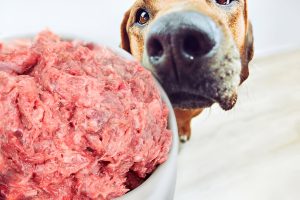As any Dog feeding owner knows, our furry companions aren’t just pets; they’re cherished members of the family. And just like any family member, ensuring their health and happiness is paramount. One of the most foundational pillars of canine well-being is optimal nutrition.

Dog feeding, Dog Food
Picture this: a gleaming coat, bright eyes brimming with vitality, and boundless energy ready for adventures. This isn’t merely the stuff of dreams; it’s the tangible result of providing your canine companion with a diet that’s not just adequate, but exceptional.
Optimal nutrition isn’t a one-size-fits-all approach; it’s a carefully curated blend of science, intuition, and love, tailored to meet the unique needs of each individual dog. Join me on a journey through the world of canine nutrition, where we’ll explore the ingredients, principles, and practices that form the cornerstone of a healthy and thriving can
Optimal nutrition for dogs is crucial for their overall health, well-being, and longevity. Here are some key principles to consider:
- Balanced Diet: Dogs need a balanced diet that includes proteins, carbohydrates, fats, vitamins, and minerals. Proteins should come from high-quality sources such as meat, fish, or poultry.
- Protein: Protein is essential for muscle development, immune function, and overall health. Ensure that your dog’s diet includes adequate levels of high-quality protein.
- Carbohydrates: While dogs are primarily carnivores, they can also benefit from carbohydrates for energy. Opt for complex carbohydrates like whole grains or vegetables rather than simple sugars.
- Fats: Fats are a concentrated source of energy and are important for maintaining healthy skin and coat, as well as supporting various bodily functions. Include healthy fats from sources like fish oil, flaxseed oil, or chicken fat.
- Vitamins and Minerals: Dogs require essential vitamins and minerals for various metabolic processes and overall health. A well-balanced diet should provide these nutrients, but supplementation may be necessary in certain cases.
- Water: Ensure your dog has access to fresh, clean water at all times. Adequate hydration is indispensable for maintaining optimal bodily functions, including efficient digestion, proper circulation, and effective temperature regulation.
- Avoid Harmful Ingredients: Avoid feeding your dog foods that contain artificial preservatives, colors, or flavors. Also, be cautious of ingredients like onions, garlic, grapes, raisins, chocolate, and certain nuts, as they can be toxic to dogs.
- Portion Control: Obesity is a common problem in dogs, which can lead to various health issues. Monitor your dog’s weight and adjust their food portions accordingly to maintain a healthy weight.
- Life Stage and Health Considerations: The nutritional needs of dogs vary based on factors such as age, breed, size, activity level, and health status. Consult with your veterinarian to determine the most appropriate diet for your dog based on these factors.
- Regular Exercise: Along with proper nutrition, regular exercise is essential for maintaining your dog’s overall health and preventing obesity. Make sure your dog gets enough physical activity based on their age and breed requirements.
Remember that every dog is unique, so it’s essential to tailor their diet and nutritional plan to meet their individual needs. Consulting with a veterinarian or a qualified pet nutritionist can help you develop a customized nutrition plan for your furry friend.
Dog nutrition encompasses several key aspects that contribute to their overall health and well-being:
- Macronutrients:
- Proteins: Essential for building and repairing tissues, supporting immune function, and serving as a source of energy. Superior protein options encompass a range of sources such as lean meats, fish rich in omega-3 fatty acids, eggs brimming with essential amino acids, and dairy products offering complete protein profiles.
- Carbohydrates: Provide energy and fiber. For sustained energy and balanced nutrition, prioritize complex carbohydrates derived from nutrient-dense sources like whole grains, fiber-rich fruits, and vitamin-packed vegetables over the quick energy release of simple sugars.
- Fats: Serve as a concentrated energy source, aid in nutrient absorption, support skin and coat health, and provide essential fatty acids. with essential fats sourced from health-promoting options such as omega-3-rich fish oil, omega-6-packed flaxseed oil, and the flavorful, nutrient-rich chicken fat, supporting overall well-being and vitality.
- Micronutrients:
- Vitamins: Play crucial roles in various metabolic processes, immune function, and overall health. Key vitamins for dogs include vitamin A, vitamin D, vitamin E, and the B vitamins.
- Minerals: Essential for bone health, nerve function, muscle contraction, and fluid balance. Important minerals for dogs include calcium, phosphorus, potassium, magnesium, and zinc.
- Water: Vital for hydration, nutrient transportation, temperature regulation, and waste removal. Ensure your dog has access to clean, fresh water at all times.
- Life Stage and Breed Considerations:
- Puppy Nutrition: Puppies have different nutritional needs than adult dogs, requiring higher levels of protein, fat, vitamins, and minerals to support growth and development.
- Adult Nutrition: Adult dogs require a balanced diet to maintain their weight, energy levels, and overall health.
- Senior Nutrition: Older dogs may benefit from diets tailored to support joint health, cognitive function, and maintain a healthy weight.
- Breed-specific Nutrition: Certain breeds may have unique nutritional requirements or predispositions to certain health conditions. Tailor your dog’s diet to their breed type and individual needs.
- Special Dietary Needs:
- Food Allergies and Sensitivities: Some dogs may have allergies or intolerances to certain ingredients, such as grains, dairy, or specific proteins. Identify and eliminate allergens from your dog’s diet.
- Weight Management: Obesity is a common issue in dogs and can lead to various health problems. Monitor your dog’s weight and adjust their diet and exercise regimen as needed to maintain a healthy weight.
- Medical Conditions: Dogs with medical conditions such as diabetes, kidney disease, or gastrointestinal issues may require specialized diets prescribed by a veterinarian.
- Feeding Practices:
- Portion Control: Measure your dog’s food portions to prevent overfeeding and obesity.
- Feeding Frequency: Determine the appropriate number of meals per day based on your dog’s age, size, and activity level.
- Feeding Methods: Choose between dry kibble, canned food, raw diets, or homemade diets based on your dog’s preferences and nutritional needs.

Dog feeding, Dog Food
By addressing these various aspects of dog nutrition, you can ensure that your canine companion receives a balanced diet that promotes optimal health and longevity. Consulting with a veterinarian or a qualified pet nutritionist can help you develop a customized nutrition plan tailored to your dog’s specific needs and preferences.
Different Types Of Commercial Dog Feeding
Commercial dog food comes in various forms, each with its own characteristics and benefits. Here are some of the most common types:
-
Dry Dog Food (Kibble):
- Description: Dry dog food is the most popular and widely available type of commercial dog food. It typically consists of a combination of meat, grains, vegetables, and added vitamins and minerals, which are formed into small, dry pellets.
- Benefits:
- Convenient and easy to store.
- Promotes dental health by helping to scrape plaque and tartar off the teeth.
- Usually more affordable than wet or raw dog food options.
- Considerations:
- May contain more carbohydrates and preservatives compared to other types of dog food.
- Some dogs may prefer the taste and texture of wet food over dry kibble.
-
Wet Dog Food (Canned):
- Description: Wet dog food is typically sold in cans and contains higher moisture content than dry food. It often consists of meat chunks or pâté in gravy or gel.
- Benefits:
- Highly palatable, making it suitable for picky eaters or dogs with dental issues.
- Provides additional hydration, which can be beneficial for dogs who don’t drink enough water.
- Considerations:
- More expensive per serving compared to dry dog food.
- Requires refrigeration after opening and may spoil more quickly than dry food.
-
Raw Dog Food:
- Description: Raw dog food is made from uncooked, minimally processed ingredients such as raw meat, bones, fruits, and vegetables. It can be homemade or commercially prepared.
- Benefits:
- Mimics a dog’s natural diet in the wild.
- May improve coat health, digestion, and energy levels.
- Some proponents believe raw diets can reduce allergies and promote dental health.
- Considerations:
- Requires careful handling to prevent contamination with bacteria such as Salmonella or E. coli.
- Can be expensive, especially if using high-quality ingredients or commercially prepared raw diets.
- Not all veterinarians agree on the safety and benefits of raw feeding, so it’s essential to do thorough research and consult with a veterinarian before starting a raw diet.
-
Dehydrated or Freeze-Dried Dog Food:
- Description: Dehydrated or freeze-dried dog food is made by removing moisture from fresh ingredients without cooking them at high temperatures. This process preserves nutrients while extending shelf life.
- Benefits:
- Retains more nutrients compared to traditional kibble or canned food.
- Lightweight and portable, making it convenient for travel or camping.
- Can be rehydrated with water to create a meal with a similar texture to wet food.
- Considerations:
- Generally more expensive than traditional dry or wet dog food options.
- Requires rehydration before feeding, which may be inconvenient for some owners.
-
Veterinary Prescription Diets:
- Description: Veterinary prescription diets are specially formulated to address specific health conditions such as allergies, kidney disease, diabetes, or obesity. They are available in both dry and wet forms.
- Benefits:
- Designed by veterinarians and nutritionists to meet the unique nutritional needs of dogs with specific health issues.
- Can help manage and support various medical conditions.
- Considerations:
- Typically more expensive than regular commercial dog food.
- Require a prescription from a veterinarian.
Each type of commercial dog food has its pros and cons, and the best choice for your dog will depend on factors such as their age, health status, dietary preferences, and your own lifestyle and budget constraints. It’s essential to consult with a veterinarian or a qualified pet nutritionist to determine the most suitable diet for your canine companion.
Homemade Dog Food Recipes:

Dog feeding, Dog Food
1. Chicken and Vegetable Stew:
- Ingredients:
- Boneless, skinless chicken breasts or thighs
- Carrots, chopped
- Sweet potatoes, diced
- Green beans, chopped
- Brown rice or quinoa
- Water or low-sodium chicken broth
- Instructions:
- Cook the chicken in a large pot until fully cooked, then shred or chop into bite-sized pieces.
- Add chopped vegetables and rice or quinoa to the pot.
- Pour in enough water or low-sodium chicken broth to cover the ingredients.
- Simmer until vegetables are tender and the mixture has thickened into a stew-like consistency.
- Allow to cool before serving.
2. Beef and Barley Casserole:
- Ingredients:
- Lean ground beef
- Barley
- Spinach, chopped
- Peas
- Carrots, grated
- Low-sodium beef broth
- Instructions:
- Brown the ground beef in a skillet until fully cooked, then drain excess fat.
- Cook barley according to package instructions.
- In a large bowl, combine cooked beef, barley, chopped spinach, peas, grated carrots, and enough beef broth to moisten the mixture.
- Transfer the mixture to a baking dish and bake at 350°F (175°C) for 20-25 minutes until heated through.
- Allow to cool before serving.
3. Salmon and Sweet Potato Patties:
- Ingredients:
- Canned salmon (with bones and skin for added calcium)
- Sweet potatoes, cooked and mashed
- Eggs
- Oats or whole wheat breadcrumbs
- Instructions:
- Drain excess liquid from canned salmon and remove any large bones.
- In a large bowl, combine salmon, mashed sweet potatoes, eggs, and oats or breadcrumbs until well mixed.
- Shape the combined mixture into patties and arrange them evenly on a baking sheet that has been lightly greased or lined with parchment paper for easy cleanup
- Bake at 350°F (175°C) for 25-30 minutes until golden brown and cooked through.
- Allow to cool before serving.
Tips for Maintaining a Healthy Weight:
- Portion Control: Measure your dog’s food portions according to their age, size, and activity level. Use a measuring cup or scale to ensure accuracy and avoid overfeeding.
- Scheduled Feeding: Establish a regular feeding schedule with set mealtimes rather than free-feeding throughout the day. This helps prevent overeating and allows you to monitor your dog’s food intake.
- Choose High-Quality Ingredients: Opt for lean proteins, whole grains, and fresh fruits and vegetables in your homemade dog food recipes. Avoid excessive fats, sugars, and fillers that can contribute to weight gain.
- Limit Treats: While treats can be a useful tool for training and bonding with your dog, they should be given in moderation. Choose low-calorie, healthy treats or use small pieces of your dog’s regular food as rewards.
- Regular Exercise: Ensure your dog gets regular exercise to help burn calories, build muscle, and maintain a healthy weight. Ensure to schedule daily walks, playtime, and engaging activities that stimulate both their physical and mental faculties, fostering a well-rounded lifestyle that enhances their overall health and happiness.
- Monitor Weight and Body Condition: Regularly weigh your dog and monitor their body condition score to track changes in weight and adjust their diet and exercise regimen as needed.
- Consult with a Veterinarian: If you’re unsure about your dog’s ideal weight or how to create a balanced diet for them, consult with a veterinarian or a qualified pet nutritionist for personalized guidance and recommendations.
By following these tips and incorporating nutritious homemade dog food recipes into your dog’s diet, you can help them maintain a healthy weight and overall well-being.
As we navigate the world of dog ownership, it’s easy to get lost in the sea of options when it comes to feeding our furry companions. Yet, amidst the abundance of commercial brands and homemade recipes, one truth remains steadfast: optimal nutrition is the cornerstone of canine vitality.
It’s the secret ingredient that transforms a mere pet into a cherished companion, radiating with health and happiness. So let us approach the feeding bowl not as a mundane chore, but as a sacred ritual of nourishment and love. Let us choose wisely, crafting meals with care and consideration, mindful of the unique needs and preferences of our canine friends.
And as we witness their wagging tails and bright eyes, let us take pride in knowing that we’ve provided them with not just sustenance, but a foundation for a life filled with joy and vitality. For in the journey of dog ownership, optimal nutrition isn’t just about filling their bellies; it’s about nourishing their souls.






